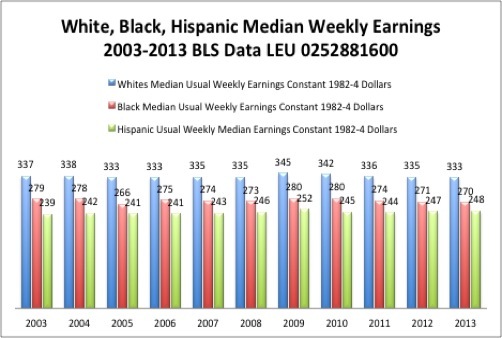For the last few years, after decades of pause, the discussion of growing inequity is moving forward. A few years back it was the core appeal of some of what Occupy Wall Street wanted to put on the national agenda. Worries and pronouncements about our massive and growing inequality are now featured in campaigns, national and local. Even our long overdue debates about raising minimum wage and saving on social spending feature discussion of inequality.
What rarely gets its due is the terrible state of wage growth. Those even passingly interested in news know we have a large and lingering unemployment problem. Sure, the headline unemployment rate has fallen to 6.7 percent. This means we officially had 10.4 million people actively looking for work and not finding it in December 2013. Another 6.1 million wanted a job but were not actively looking; these millions are not included in 6.7 percent unemployment rate. Additionally, we had 91 million not in the labor force and thus, not counted as employed or unemployed. The inclusive unemployment measure, called U6 by the Bureau of Labor Statistics, is stuck at 13.1 percent. The U6 includes those who have stopped looking because they don't think that jobs exist and the involuntary part timers. These folks are not measured in the U3, or headline, unemployment measure.
We just don't want to talk about how poorly wages are doing. Work, today is not working to build stability, savings, or a shot at the middle class. Wages have not increased. Until wages rise, steadily and meaningfully faster than prices, most folks wont feel that much better about the economy. The middle class will remain unstable and in declines. Work needs to work for middle and lower income Americans. It has not worked that way over the last decade.
I offer the below chart. Spend a few minutes reading it over. It is worth your time and our time as a subject. It measures, in inflation adjusted, or constant, dollars the median weekly earnings of Americans. All the data is from the BLS and is available here: http://www.bls.gov/news.release/archives/wkyeng_01182013.pdf
